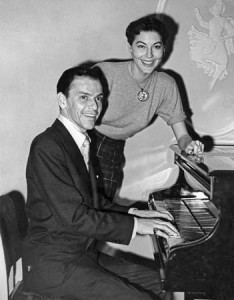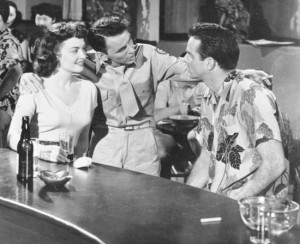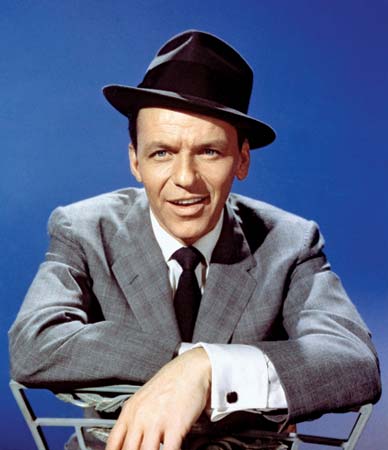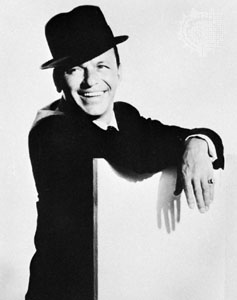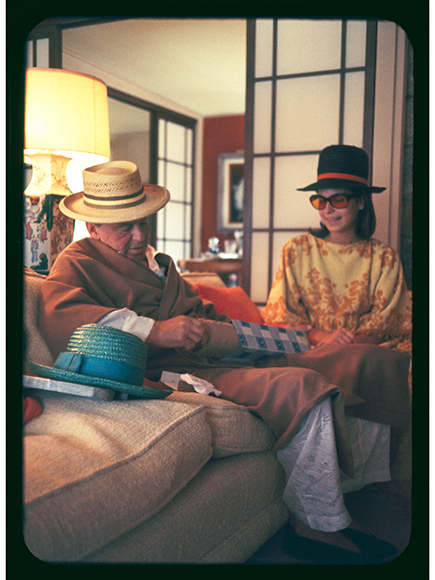Frank Sinatra (12 Dec 1915 – 14 May 1998)
BIOGRAPHIES, 14 Dec 2015
Encyclopædia Britannica – TRANSCEND Media Service
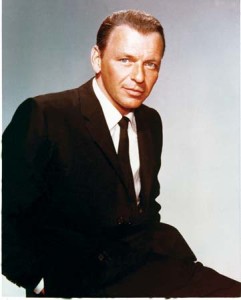 Frank Sinatra, in full Francis Albert Sinatra (born December 12, 1915, Hoboken, New Jersey, U.S.—died May 14, 1998, Los Angeles, California), American singer and motion-picture actor who, through a long career and a very public personal life, became one of the most sought-after performers in the entertainment industry; he is often hailed as the greatest American singer of 20th-century popular music.
Frank Sinatra, in full Francis Albert Sinatra (born December 12, 1915, Hoboken, New Jersey, U.S.—died May 14, 1998, Los Angeles, California), American singer and motion-picture actor who, through a long career and a very public personal life, became one of the most sought-after performers in the entertainment industry; he is often hailed as the greatest American singer of 20th-century popular music.
Sinatra’s father, Martin, was a tavern owner and part-time prizefighter, and his mother, Natalie—known to all as “Dolly”—was a domineering influence both in local politics and in her son’s life and career. Upon hearing the recordings of Bing Crosby, Sinatra was inspired as a teenager to choose popular singing as a vocation. He joined a local singing group, which, as the Hoboken Four, won a talent competition in 1935 on the popular radio program Major Bowes’ Amateur Hour. The group toured the country that year, but Sinatra was the only member with serious musical ambitions, and they soon disbanded. For the next few years, Sinatra sang with local dance bands and for remote radio broadcasts. In 1939, while singing and waiting tables at the Rustic Cabin in Englewood Cliffs, New Jersey, he was discovered and hired by trumpeter Harry James, who had recently quit the Benny Goodman Orchestra to start his own band.
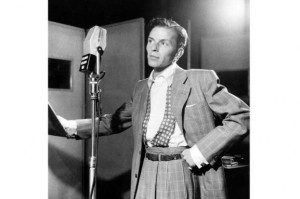
Frank Sinatra recording at Columbia Recording Studios, 1 October 1947. (Photo by William Gottlieb/Redferns)
The band singer
Sinatra’s six-month tenure with the James band resulted in 10 commercial recordings featuring the young singer. On songs such as “From the Bottom of My Heart,”“My Buddy,” and “Ciribiribin,” Sinatra’s warm baritone and sensitivity to lyrics are well showcased. The best-known of the James-Sinatra sides is “All or Nothing at All”—a flop in 1939 but a million-seller when rereleased in 1943, after both men had become stars. Sinatra’s reputation among industry musicians grew swiftly, and James graciously freed Sinatra from his contract when the singer received a more lucrative offer from bandleader Tommy Dorsey in December 1939. The 83 commercial recordings (as well as several surviving air checks) that Sinatra went on to make with the Dorsey band from 1940 to 1942 represent his first major body of work.
Sinatra was enormously influenced by Dorsey’s trombone playing and strove to improve his breath control in order to emulate Dorsey’s seamless, unbroken melodic passages. It was also during this period that Sinatra proved his mastery of both ballads and up-tempo numbers, and Dorsey arrangers Axel Stordahl, Paul Weston, and Sy Oliver soon tailored their arrangements to highlight Sinatra’s skills. Often teamed with singer Connie Haines, or with Dorsey’s vocal group, The Pied Pipers (featuring future recording star Jo Stafford), Sinatra was featured on memorable sides such as “I’ll Never Smile Again,” “I’ll Be Seeing You,” “Without a Song,” and “Oh! Look at Me Now.”
By 1942 Sinatra’s fame had eclipsed that of Dorsey, and the singer yearned for a solo career—a risky venture in the days when few big-band singers found success on their own. Dorsey enjoyed having such a popular performer in his band and became irate when Sinatra expressed his desire to leave, even though Sinatra offered to stay with the band for another year. After months of bitter negotiations, Sinatra left the Dorsey organization in late 1942; within weeks, he was a cultural phenomenon. Near-hysteria was generated by Sinatra’s appearances at New York’s Paramount theatre in January 1943, and such throngs of screaming, young female fans—known as “bobby-soxers”—had not been seen since the days of Rudolph Valentino. The singer was soon dubbed “Frankieboy,” “The Sultan of Swoon,” and, most popularly, “The Voice.”
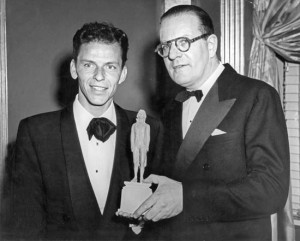
Frank Sinatra (left) receiving the Thomas Jefferson Award from James Waterman Wise, director of the Council Against Intolerance in America, New York City, 1947.
The Columbia years
A strike by the American Federation of Musicians against the major record companies curtailed Sinatra’s recording output during most of 1943–44. His solo recording career for Columbia Records began in earnest in November 1944, when he compensated for lost time by recording dozens of sides within a three-month period. Songs such as “If You Are But a Dream,” “ There’s No You,” “I Fall in Love Too Easily,” “Nancy,” and his theme song at that time, “Put Your Dreams Away,” are some of the first recordings in what would come to be known to fans as the “Columbia era” (1943–52). His chief arranger during these years was Axel Stordahl, who also left Dorsey in late 1942 to work exclusively with Sinatra. Stordahl’s spare string arrangements on beautiful recordings such as “You Go to My Head” (1945), “These Foolish Things” (1945), and “That Old Feeling” (1947) defined the sound of Sinatra’s Columbia years.
Sinatra’s success continued unabated until about 1948. In later years, he speculated that his sudden drop in popularity was because of his reluctance to change styles and evolve musically. He also garnered a great deal of negative press throughout 1947–48. It was about this time that the public first read reports of his friendships with organized-crime figures, and newspaper accounts were published of Sinatra cavorting in Cuba with the likes of Lucky Luciano and Joe Fischetti, a prominent mob figure. There was also the widely reported incident, and resulting lawsuit, in which Sinatra punched gossip columnist Lee Mortimer, an action for which Sinatra received some vindication in later years when it was revealed that Mortimer had collaborated with the FBI to discredit Sinatra. Whatever the cause, Sinatra began a five-year period of professional decline and personal depression. Years of singing as many as 100 songs per day had taken its toll, and he lost his voice completely for several months in 1950 because of vocal-chord hemorrhaging. His divorce from first wife, Nancy, in 1951 and his subsequent stormy marriage to actress Ava Gardner further harmed his reputation. In addition, then-new Columbia Records president Mitch Miller cajoled Sinatra to record several banal novelty tunes that compromised his artistic credibility. In 1952 his Columbia recording contract came due and was not renewed, he was dropped by his talent agency, his network television show was canceled, and Sinatra was considered a has-been. Ironically, and despite Miller’s demands, several of Sinatra’s recordings from this period are now considered among his best, with shining examples such as “Mad About You,” “Nevertheless,” “Birth of the Blues,” and, especially, his 1951 recording of “I’m a Fool to Want You.”
The actor
Sinatra appeared in several films throughout the 1940s, the best among them being the musicals in which he costarred with dancer Gene Kelly. Of these, Anchors Aweigh (1945) and Take Me Out to the Ballgame (1949) are pleasant diversions, whereas On the Town (1949) ranks among the greatest of film musicals. It was acting, rather than music, that precipitated Sinatra’s comeback in 1953. He pleaded with Columbia Pictures president Harry Cohn for the role of the scrappy, tragic soldier, Maggio, in From Here to Eternity (1953), and he agreed to work for scale. His performance was universally praised and earned him an Oscar for best supporting actor. Sinatra went on to become one of the top film stars of the 1950s and ’60s, and he delivered fine performances in quality films such as Suddenly (1954), Young at Heart (1954), The Man with the Golden Arm (1955; Academy Award nomination for best actor), Guys and Dolls (1955), The Joker Is Wild (1957), Pal Joey (1957), and Some Came Running (1958). The political thriller The Manchurian Candidate (1962) is perhaps Sinatra’s greatest film and features his best performance. With the possible exception of Bing Crosby, no other American entertainer achieved such a level of respect and popularity as both singer and actor. Although it is said that Sinatra stopped taking films seriously after The Manchurian Candidate, owing to his ongoing frustration with the tedious filmmaking process, his motion-picture résumé remains impressive. In later years, he was memorable in The Detective (1968), and in his final starring vehicle, The First Deadly Sin (1980).
The Capitol years
In 1953 Sinatra’s musical style took a dramatic turn. He signed with Capitol Records and, throughout the next nine years, issued a series of recordings widely regarded as his finest body of work. He is credited (though perhaps not accurately so) with inventing the “concept album”—an LP collection of songs built around a single theme or mood. His new approach also demanded new arrangements, and the in-house arrangers at Capitol were among the best. He worked with veteran big-band musician Billy May on outstanding up-tempo albums such as Come Fly with Me (1958) and Come Dance with Me! (1959), and with the arranger-composer Gordon Jenkins, whose lush string arrangements heightened the melancholy atmosphere of Where Are You? (1957) and No One Cares (1959).
As excellent as the albums with May and Jenkins were, however, Sinatra’s collaboration with arranger Nelson Riddle was truly a legendary musical partnership. Riddle, a former big-band trombonist who had arranged for artists such as Nat King Cole and Ella Mae Morse, scored some of Sinatra’s first Capitol sessions in 1953, initiating a collaboration that would extend over two decades and hundreds of recordings. Riddle was, in Sinatra’s words, “the greatest arranger in the world,” and critics agreed. With an instinctive sense for the proper musical setting, Riddle employed everything from quartets to 50-piece orchestras for ballad arrangements that were often characterized by a dominant solo instrument (particularly a mournful trombone), and by Riddle’s “private melodies,” which served as counterpoint to Sinatra’s highly personal approach. For swing tunes, Riddle developed his trademark “heartbeat rhythm,” a steady, driving beat, slightly slower than most swing charts, and meant to emulate “the pulse rate of the human heart after a brisk walk,” in Riddle’s words. Virtually all of the albums the Sinatra-Riddle team made for Capitol—such as In the Wee Small Hours (1955), Songs for Swingin’ Lovers! (1956), and Only the Lonely (1958)—are masterpieces.
Despite the importance of the Capitol arrangers in determining Sinatra’s new sound, the resulting albums were still very much dominated by the singer himself. Sinatra’s voice, which Riddle often described as having the warm timbre of a cello, had deepened and grown in power; gone was the whispery crooning of the Columbia days. His failed marriage to Gardner infused his ballad singing with a heretofore unseen emotional urgency and plaintive quality, although he eschewed anything that approached heart-on-the-sleeve histrionics. He attacked swing numbers with abandon and displayed his jazz influences with an uncanny sense of syncopation and an innate knowledge of “blue notes,” which he incorporated into the melody line. Two of his most heralded recordings—“I’ve Got You Under My Skin” (1956) and “One for My Baby” (1958), both arranged by Riddle—illustrate well his varied approach to moods and tempos.
The Rat Pack and the mob
During the late 1950s and early ’60s, Sinatra frequently appeared on stage and in films with his close-knit band of friends known variously as “The Clan,” “The Summit,” or, most popularly, “The Rat Pack.” Peripheral members included actors Peter Lawford, Joey Bishop, and Shirley MacLaine and honorary member John F. Kennedy, but the core group was always Sinatra, Sammy Davis, Jr., and Dean Martin. The trio performed a largely ad-libbed act of boozy humour, captured well in a recording of a 1962 performance at Chicago’s Villa Venice nightclub, The Summit: In Concert (released 1999). Although the racial and misogynist humour seems dated to the contemporary listener, the act was seen as the height of swinging sophistication in the 1960s.
It was also about this time that Sinatra generated more controversy for his connections with organized crime. In retrospect, even his harshest critics now acknowledge that Sinatra’s association with underworld figures was largely one of involuntary servitude, but there is no question that his fraternizing with notorious individuals such as Sam Giancana eroded his fan base and jeopardized his political friendships. In 1960, at the behest of Joseph P. Kennedy, Sr., Sinatra acted as a liaison between Giancana and the Kennedy family during John F. Kennedy’s presidential campaign, in order to ensure votes for Kennedy. Within a few years, however, the Kennedy administration launched its war on organized crime and disassociated itself from Sinatra, while Giancana, having lost a powerful political connection, did likewise. Sinatra continued to associate with mob figures throughout the years (“If you sing in joints, you’re gonna know the guys that run them,” was Sinatra’s standard defense), but his association with Giancana was perhaps the most publicized.
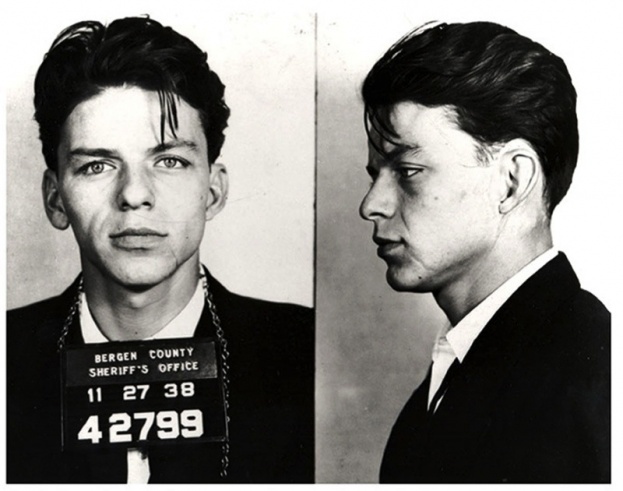
Sinatra poses for a mug shot after being arrested and charged with “carrying on with a married woman” in 1938 in Bergen County, New Jersey. The charge was later changed to adultery, and was eventually dismissed.
(Photo by Michael Ochs Archives/Getty Images)
The Reprise years
Sinatra founded Reprise Records in 1960 and was allowed to record there simultaneously with his Capitol contract, which expired in 1962. During the early 1960s, Sinatra recorded at a furious pace, releasing some 14 albums of new material during the years 1961–63. He still worked frequently with Riddle, May, and Jenkins, but new arrangers such as Johnny Mandel, Neal Hefti, and Don Costa contributed fresh ideas to his recordings. Sinatra’s prodigiousness during these years resulted in some quickly recorded albums of uneven quality, but there were also several classics on par with the best of his Capitol work. His two 1960s masterpieces, the Jenkins-arranged September of My Years (1965) and the partnership with Brazilian songwriter Antônio Carlos Jobim, Francis Albert Sinatra and Antonio Carlos Jobim (1967), rank among Sinatra’s greatest albums. He also had chart success during the decade with the hit singles “Strangers in the Night” (1966), “That’s Life” (1967), and “My Way” (1969), but as the decade wore on, his output was increasingly marred by misguided attempts to capture the youth market or by questionable choices of collaborators.
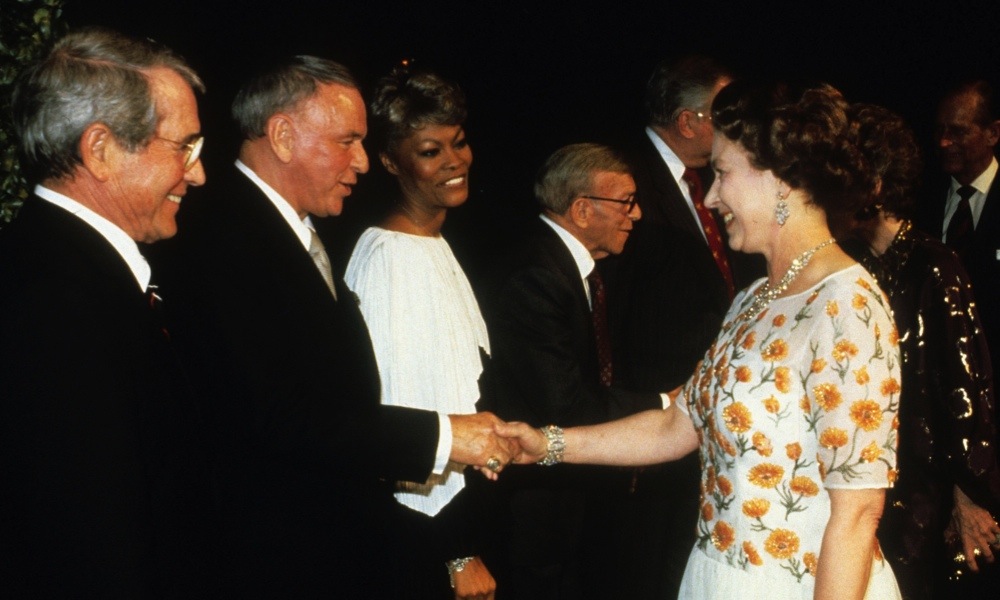
Queen Elizabeth ll shakes hands with singer Frank Sinatra, watched by Perry Como and Dionne Warwick, at a dinner at the studios of 20th Century Fox on February 27, 1983 in Los Angeles, California. (Photo by Anwar Hussein/Getty Images)
The mature years
By 1969 the “Woodstock generation” dominated the music market, leaving Sinatra to lament, “Nobody’s writing songs for me any more.” He announced his retirement in 1971, but by 1973 he was recording once again. In his last two decades as a recording artist, he chose his projects carefully and released only seven albums of new material. His voice grew increasingly gritty and coarse, the product of years of abuse from cigarettes and alcohol. But he had learned to turn vocal shortcomings into interpretive strengths, and some of his later recordings are among his most poignant. His well-regarded albums of later years include volume one of the ambitious three-disc Trilogy (1980), the ballad collection She Shot Me Down (1981), and L.A. Is My Lady (1984), which featured an all-star orchestra. He returned to the recording studio (and to his former label of Capitol Records) after nearly a decade’s absence to record Duets (1993) and Duets II (1994), which paired Sinatra with several contemporary popular singers. Though not critical favourites, the Duets albums sold millions of copies and were Sinatra’s final recordings.
In addition to his curtailed recording activity, Sinatra virtually retired from films during his later years. He concentrated instead on live performance and gave hundreds of international concerts from the late 1970s, with his final public performance in 1995. Although he suffered from failing memory and various physical infirmities during his last few years, he remained a compelling showman to the end.
Assessment
Sinatra will probably always remain a subject of controversy, largely because of his association with crime figures and his often belligerent attitude toward members of the press. Of his artistry, however, there is little debate, and the more than 1,400 recordings he made during more than 50 years as a performer are regarded by many critics as the most important body of work in American popular vocal music. Almost single-handedly, Sinatra redefined singing as a means of personal expression. In the words of critic Gene Lees, “[Sinatra] learned how to make a sophisticated craft sound as natural as an intimate conversation or personal confession.” Beneath the myth and the swagger lay an instinctive musical genius and a consummate entertainer. Through his life and his art, he transcended the status of mere icon to become one of the most recognizable symbols of American culture.
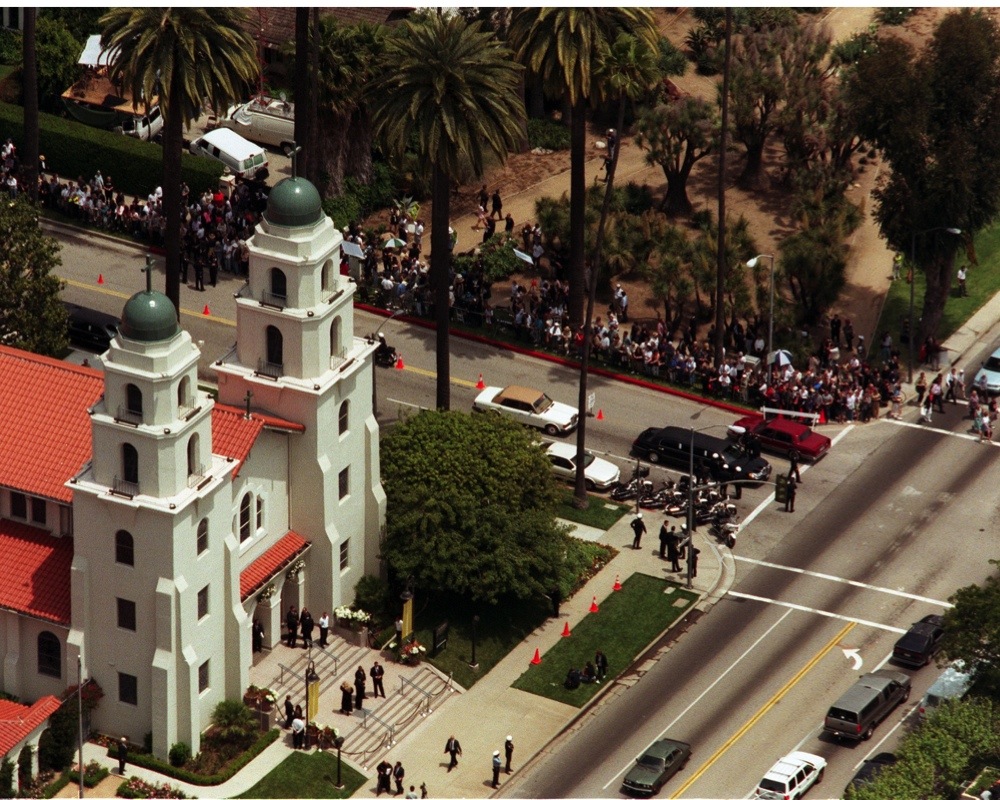
Scene of Frank Sinatra’s Funeral mass at Good Shepherd Church in Beverly Hills, May 20, 1998. People line Bedford Drive outside church. (Photo by Ken Lubas/Los Angeles Times via Getty Images)
Go to Original – britannica.com
DISCLAIMER: The statements, views and opinions expressed in pieces republished here are solely those of the authors and do not necessarily represent those of TMS. In accordance with title 17 U.S.C. section 107, this material is distributed without profit to those who have expressed a prior interest in receiving the included information for research and educational purposes. TMS has no affiliation whatsoever with the originator of this article nor is TMS endorsed or sponsored by the originator. “GO TO ORIGINAL” links are provided as a convenience to our readers and allow for verification of authenticity. However, as originating pages are often updated by their originating host sites, the versions posted may not match the versions our readers view when clicking the “GO TO ORIGINAL” links. This site contains copyrighted material the use of which has not always been specifically authorized by the copyright owner. We are making such material available in our efforts to advance understanding of environmental, political, human rights, economic, democracy, scientific, and social justice issues, etc. We believe this constitutes a ‘fair use’ of any such copyrighted material as provided for in section 107 of the US Copyright Law. In accordance with Title 17 U.S.C. Section 107, the material on this site is distributed without profit to those who have expressed a prior interest in receiving the included information for research and educational purposes. For more information go to: http://www.law.cornell.edu/uscode/17/107.shtml. If you wish to use copyrighted material from this site for purposes of your own that go beyond ‘fair use’, you must obtain permission from the copyright owner.
